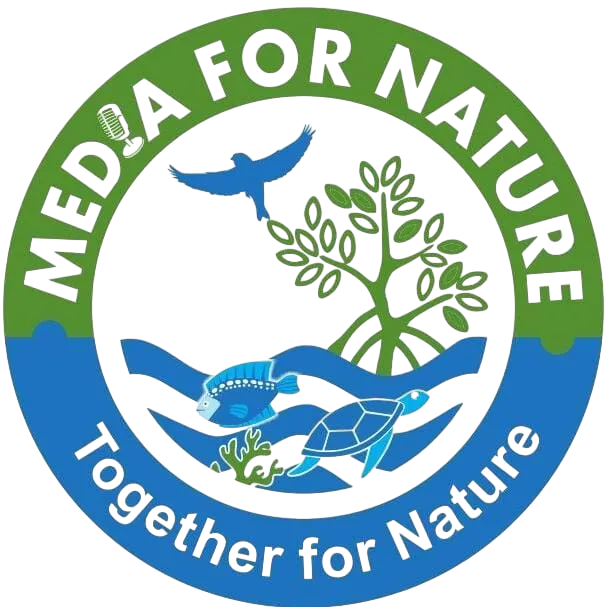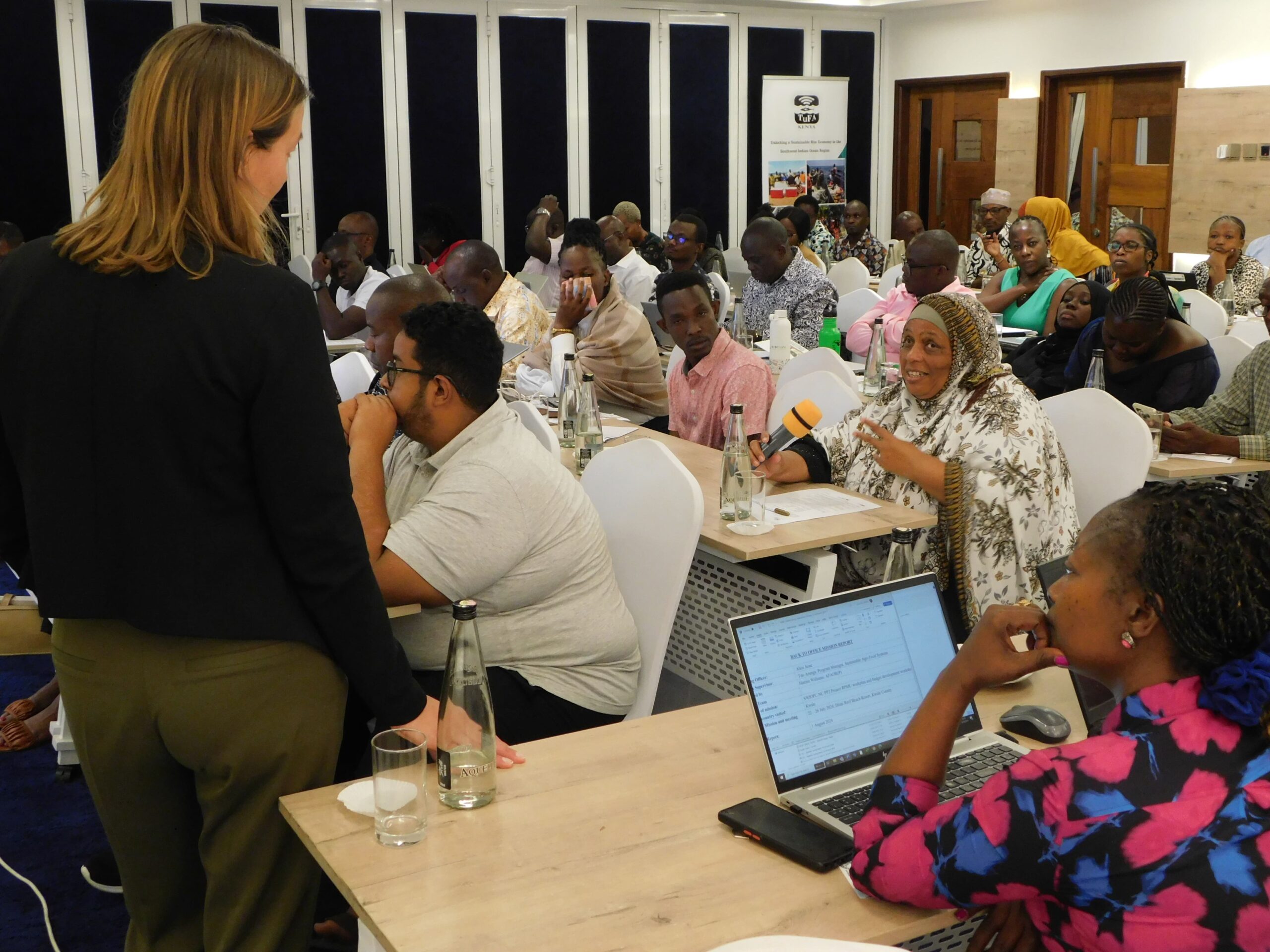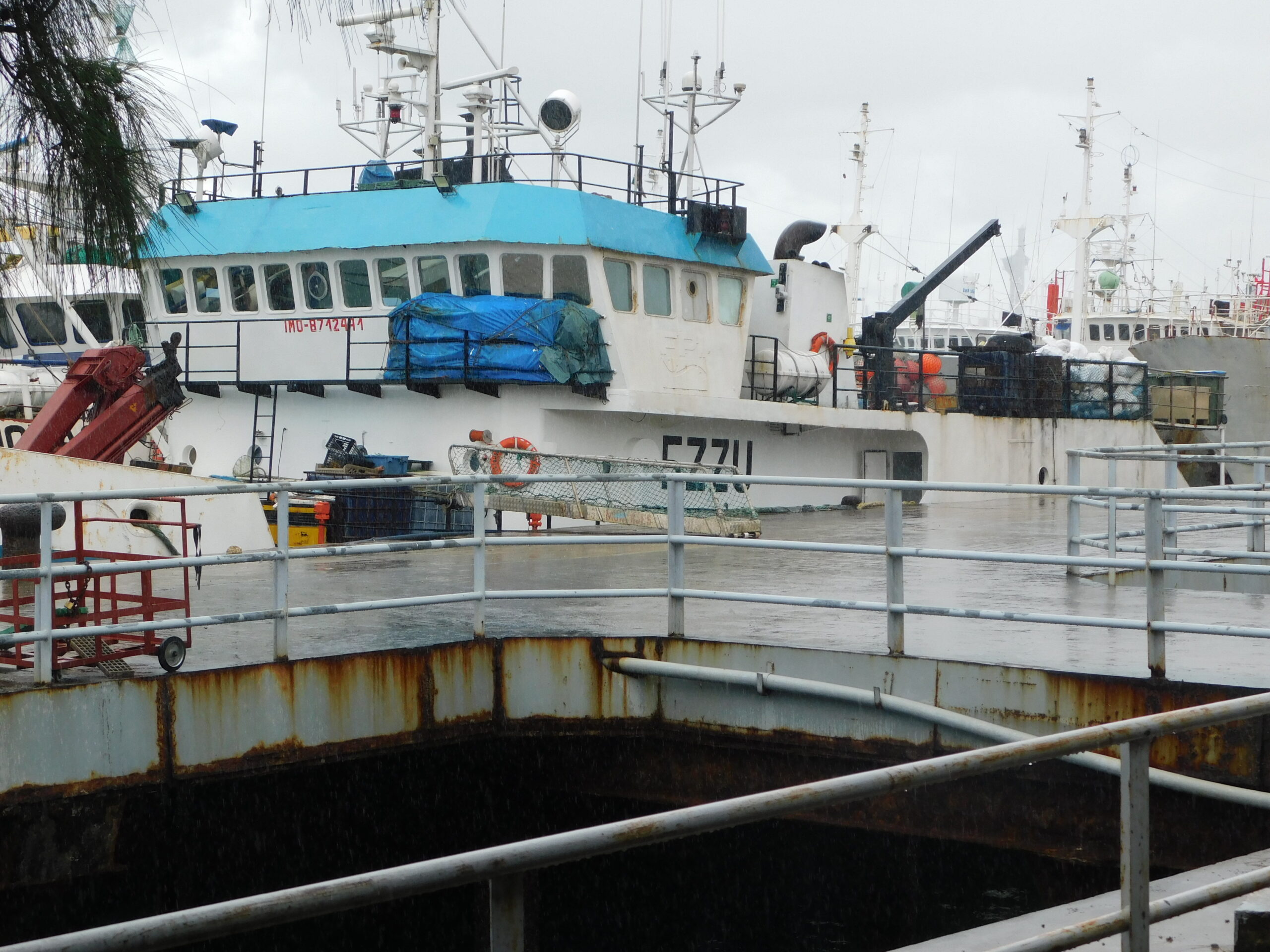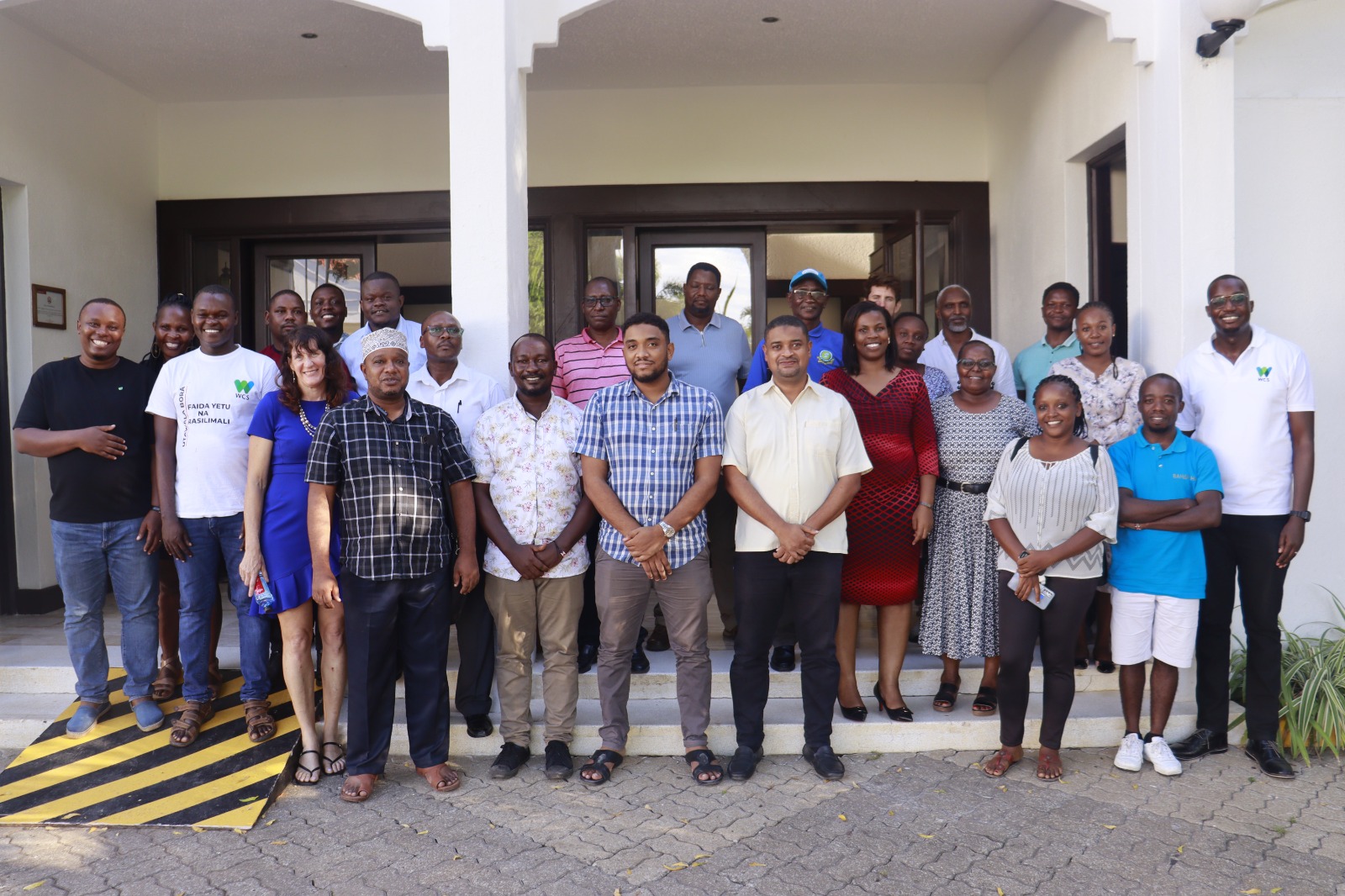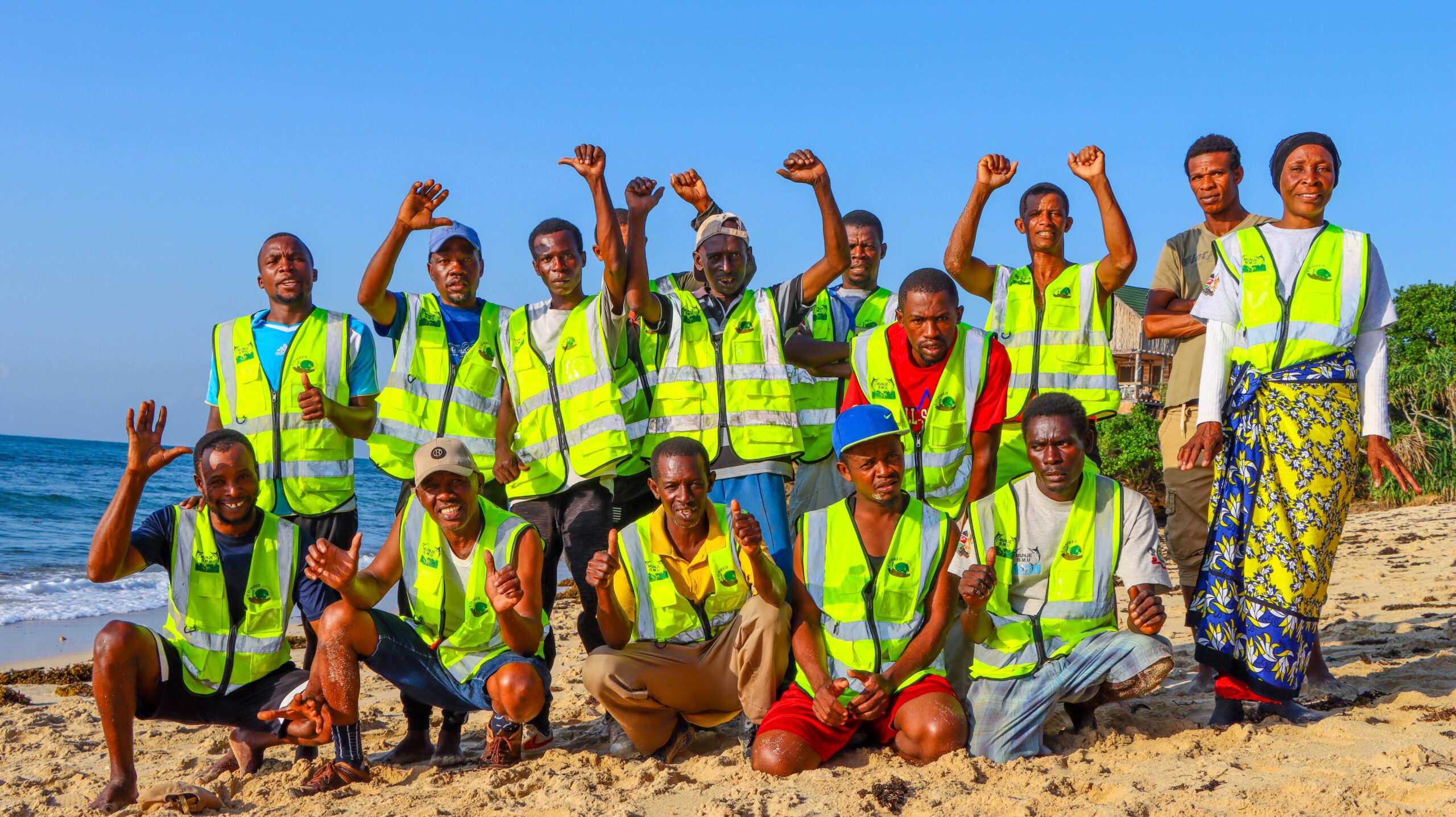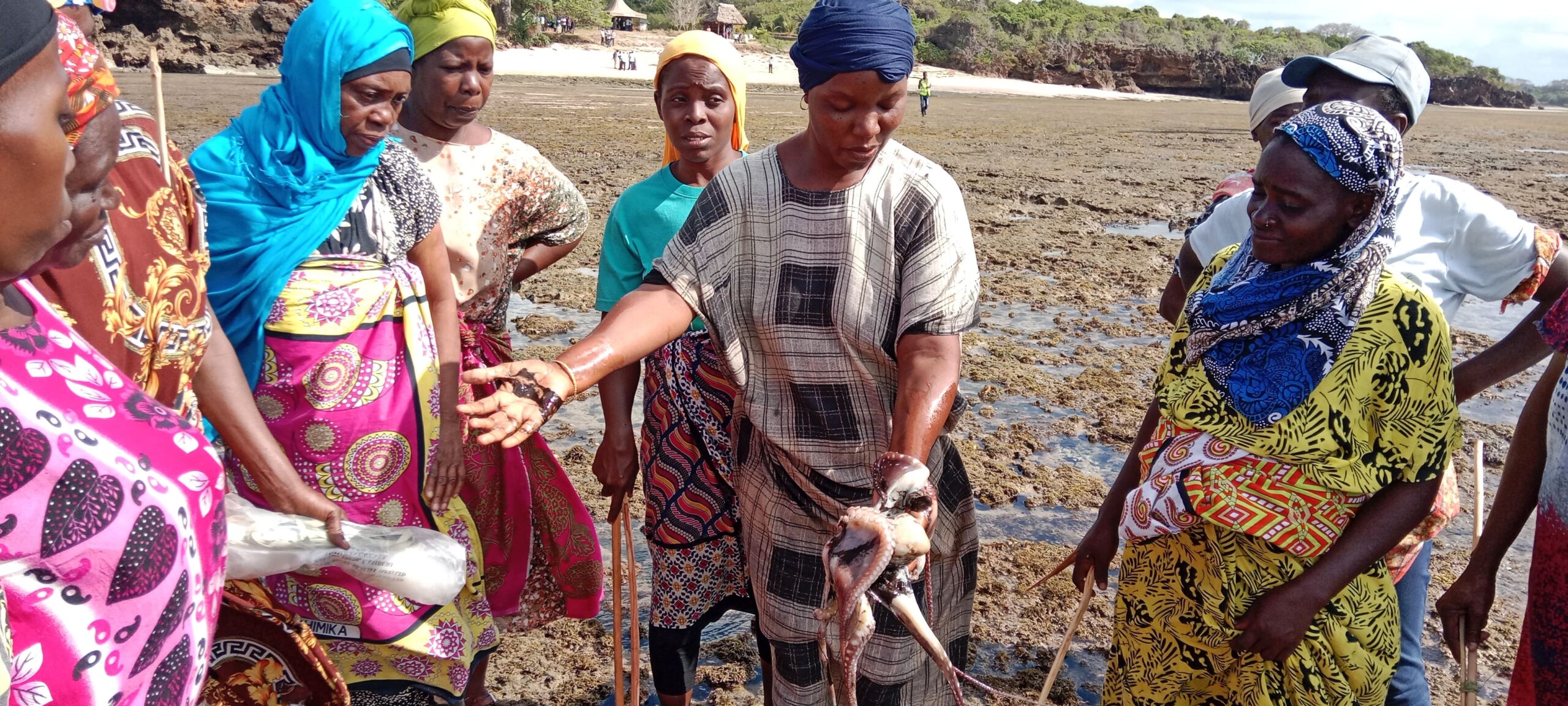A participant from Lamu, Aziza making a point at the stakeholders’ meeting on the FAO Voluntary Guidelines on Fishing Gear Marking in Mombasa/ Photo Mazera Ndurya
Cases of boats being entangled by abandoned fishing gear in the ocean are not a new phenomenon along the Kenyan coast. As fishermen tell their harrowing stories of marine accidents, marine scientists are warning that the quantity of plastics in the ocean presents the greatest menace and threat to marine safety and ecology.
“Marine litter presents a huge problem in our oceans, with some scientists warning that, by 2050, the quantity of plastics in the oceans will outweigh fish. Marine plastic poses harm to marine life, danger to safety of navigation and causes marine pollution through massive accumulation of plastics in coastal areas and the deep sea. The Authority therefore calls upon all the stakeholders represented in this meeting to take action to tackle the plastic menace.
“I strongly believe, this workshop will provide platform to develop mechanisms for sustainability, and enhance cooperation for multi-stakeholder team to support transition of maritime transport and fisheries sectors towards a low plastics future,” said Kenya Maritime Authority (KMA) Director General, Engineer Martin Munga.
These were Engineer Munga’s opening remarks during a stakeholder meeting on the Food and Agriculture Organization (FAO) Voluntary Guidelines on Fishing Gear Marking. The meeting was convened by the Kenya Maritime Authority through the International Maritime Organization (IMO) GloLitter project in partnership with Tuna Fisheries Alliance of Kenya (TuFAK).
The IMO, through the GloLitter partnership project in collaboration with the Fisheries Technology, and Operations Team (NFIFO) of FAO division is supporting the domestication, and implementation of the FAO voluntary guidelines on gear marking. The guidelines are crucial for addressing the problem of Abandoned, Lost or otherwise Discarded Fishing Gear (ALDFG), as well as addressing the problem of illegal gears.
Kenya is a GloLitter partnering country, and as such will be assisted by IMO through the GloLitter partnership project with the participatory development of legislative amendments to make gear marking a condition for fishing authorization or licenses, and to formally associate and identify gears with a registered fishing vessel and/operator in accordance with the voluntary guidelines on the marking of fishing gears.
Engineer Munga said that Kenya has ratified the International Convention for the Prevention of Pollution from ships (MARPOL), 73/78 and the 1996 Protocol to the Convention on the Prevention of Marine Pollution by Dumping of Wastes and Other Matter (London Protocol).
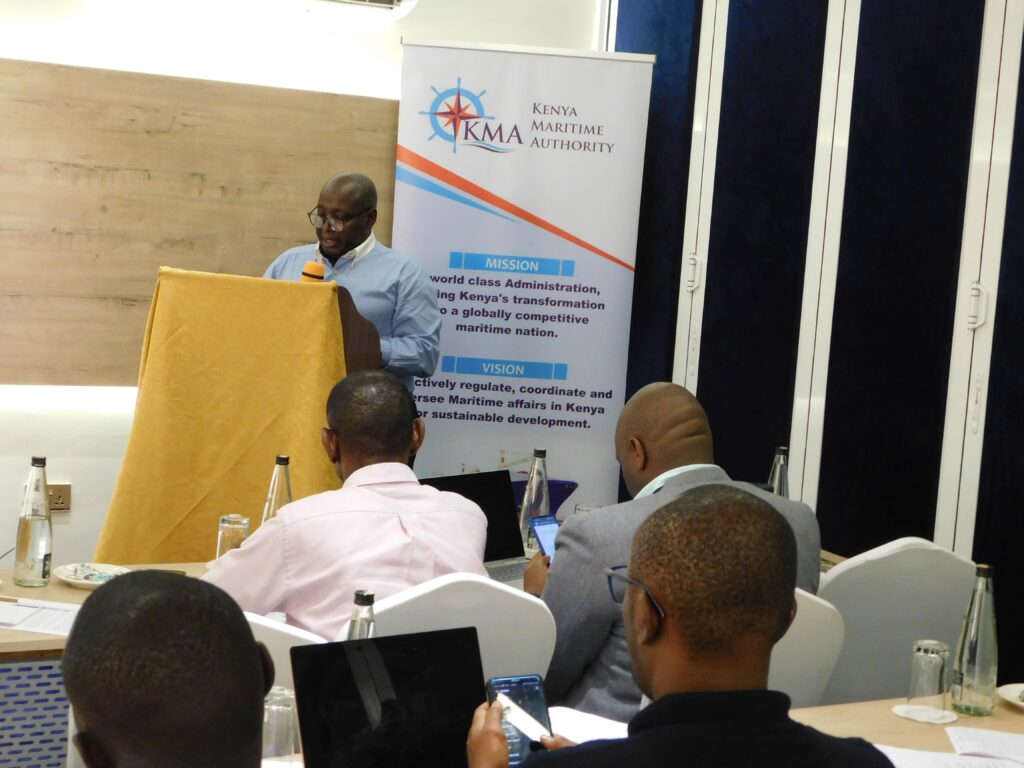
Kenya Maritime Authority (KMA) Director General, Engineer Martin Munga speaking at the opening of the stakeholders’ meeting on the FAO Voluntary Guidelines on Fishing Gear Marking / Photo Mazera Ndurya
“Annex V of the MARPOL Convention prohibits discharge of all forms of garbage into the sea from ships. The London Protocol prohibits dumping of waste into the sea apart from matter listed under Annex I of the London Protocol. These two Conventions provide the basis for the implementation of the Glo-Litter Partnership Projects in Kenya.”
STRIDES
Kenya has made significant strides in the implementation of the Glo –Litter Partnership Project. Through the project, the country has developed the Kenya National Action Plan on Marine Plastic Litter from Sea-based Sources. The Action Plan aims to improve protection of the marine environment through prevention and reduction of marine plastic litter from sea based sources and is to be implemented for a period of 10years. The country has also developed a country status report on marine plastic litter and hosted the Glo-Litter African Regional Taskforce Meeting in Nairobi, November 2023.
TuFAK
TuFAK Chairperson Hadley Becha, in his remarks, said development is not the domain of the government alone but the domain of every citizen.
“Therefore we have a role and responsibility as TuFAK to contribute to the development of these regulations and policies.”
For us to engage constructively we have to understand the subject matter. The theme of the three day workshop is very dear to us because as Tuna Fisheries Alliance of Kenya, we work on social economic development.

TuFAK Chairperson Hadley Becha making a presentation at the stakeholders’ meeting on the FAO Voluntary Guidelines on Fishing Gear Marking
However, we cannot attain that social economic development if the resources have been threatened by certain drivers including plastic pollution among other pollutants. For us to conserve and sustainably use the ocean resource, we must look at conservation and sustainable use of these resources. Our main point is how do we improve the marine environment and in this matter fisheries for sustainability.
SMALL SCALE FISHERS
John Faiz, a tour operator and fisherman from Watamu, Malindi in Kilifi County said his understanding of the issue about Voluntary Fishing Gear marking, pollution and destruction of marine ecosystem is that it should be more about commercial fishers such as trawlers.
He said the nature of their work, small scale fishers go fishing almost every day to make ends meet and would not do anything that will affect the environment they depend on for survival. Instead, he added, it is the commercial fishers who spend days and even months in the sea, who are the major polluters.
“We thank TuFAK for inviting us to contribute to the guidelines and protocols being developed to safeguard the wellbeing of the ocean. The ocean is heavily littered with plastic but most of the pollutants are coming into our oceans from outside Kenya. The litter found on the shores is negligible meaning that these are just a few of those that have floated to the beaches and that a big percentage of litter in terms of tons are in the ocean.
“Although we have laws in place, I doubt whether they are adequate enough to deal with the pollution menace. Even with the existing laws, if they were being applied effectively, we wouldn’t have reached this level of marine pollution.
“The coastal pollution is coming from different sources. One of them is that from upcountry brought through the rivers that pour its water with harmful substances such as pesticides and debris into the Indian Ocean.
The GLoLitter project is calling for recycling and reuse of the plastic litter once recovered from the ocean but Faiz says the biggest challenge is that most communities along the Kenyan Coast from Kiunga to Vanga have not been sensitized about it.
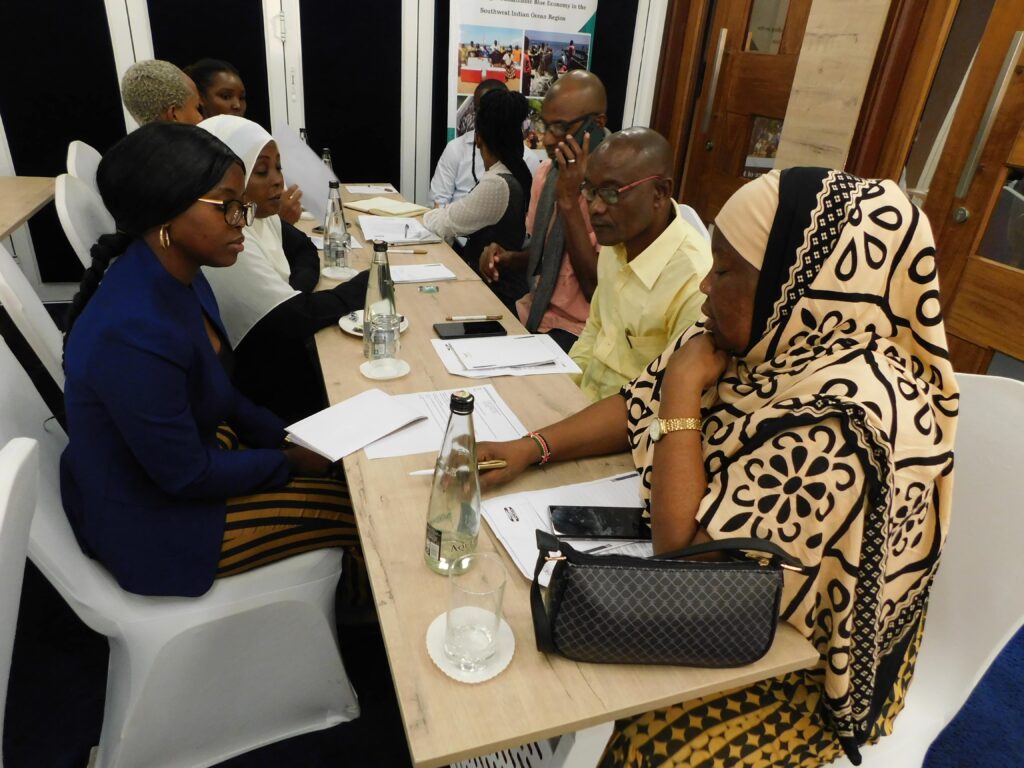
Stakeholders discussing and contributing their observations on the Voluntary Guidelines on the Marking of Fishing Gear/ Photo Mazera Ndurya
“To me the issue of recycling as opposed to burning the plastic litter is the best but the sensitization should be done across the Kenyan coast. If the project is implemented to the hilt, in accordance to the GLolitter guidelines on the issue of marking and tracking, many commercial fishers will be up in arms because they are biggest polluters. They will not hesitate to abandon defective gear, replace them with new ones and continue with their fishing.”
FAO
Alice Jesse, Focal Point, Fisheries and Blue Economy, FAO Kenya said the meeting being supported by IMO and FAO is aimed at assisting the government to reduce marine plastic litter (MPL) from maritime transport and fishing sectors. This, she said, is done through legal, policy and institutional reforms.
“Our aim is to find ways of bridging sectors and organizational mandates to implement an ecosystem approach in practice – to secure the wealth and health ocean ecosystems. Our actions, therefore, are essential to meet current and future demands of food and nutrition security.
She added, “Climate change, overexploitation of natural resources and pollution of the environment and the physical degradation and destruction of land and water habitats are all real threats to the integrity and resilience of water bodies. We need to work together, joining hands between managers, scientists, civil society, resources users and communities – to understand and develop joint strategies for how to address these threats.”
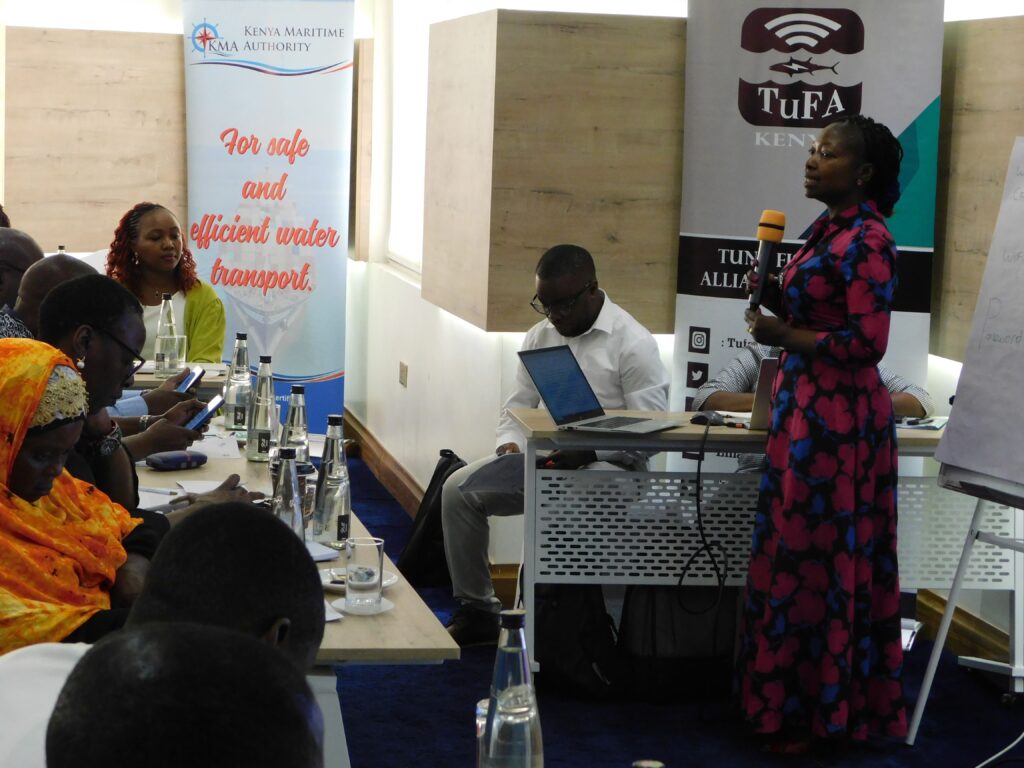
Alice Jesse, Focal Point, Fisheries and Blue Economy, FAO Kenya
Lydia Ngugi from the Maritime Technology Cooperation Centre for Africa (MTCC Africa) emphasized the need to embrace the FAO guidelines on the mapping of fishing gear.
“Looking at the GLoLitter project, it emphasizing the FAO guidelines on the mapping of the fishing gear plus the MARPOL Annex 5 and the London Protocols and as we are doing all this we are factoring the United Nations Development Goals.
“You will note that some of the SDGs lie squarely with what we are looking into, however, it’s important to think about the SDG number 5which emphasizes on gender inclusivity. The big question is how can we have women on board in the implementation of the Voluntary Guidelines of the Mapping of fishing gear as well as the IMO Conventions?,” she posed.
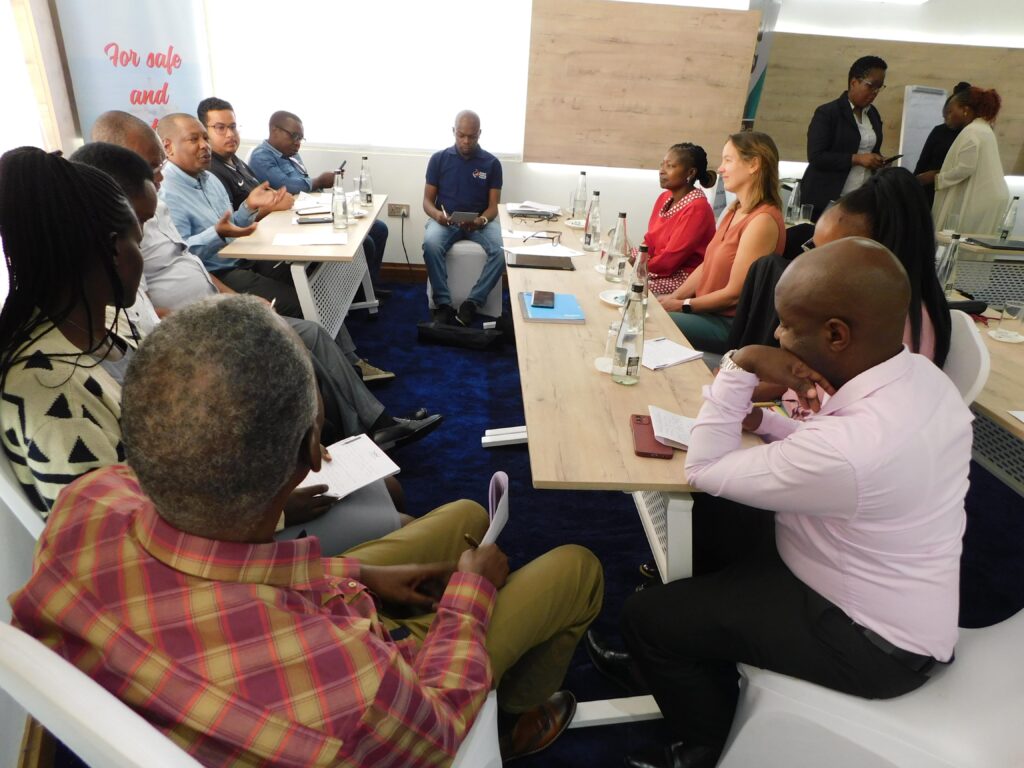
Stakeholders deliberating over Voluntary Guidelines on the Marking of Fishing Gear
Some observations on the Voluntary Guidelines on the Marking of Fishing Gear
1. Abandoned Fishing gear contribute to pollution. Currently, there is no standard way of marking gear for traceability. This should come from a wider perspective e.g. regional level. Although there is guidance of fishing gear marking, marking should be specific e.g. to BMU, County, SWIOFC region etc
2. Burning of some gear; replacement could be sought taking into account that fishermen have made some investment. Better ways of enforcement are necessary to avoid animosity between law enforcers and fishers.
3. Small Scale fishers gear marking should not be the same as commercial fishers gear though there is need for the fishers to be sensitized on the importance of gear marking.
